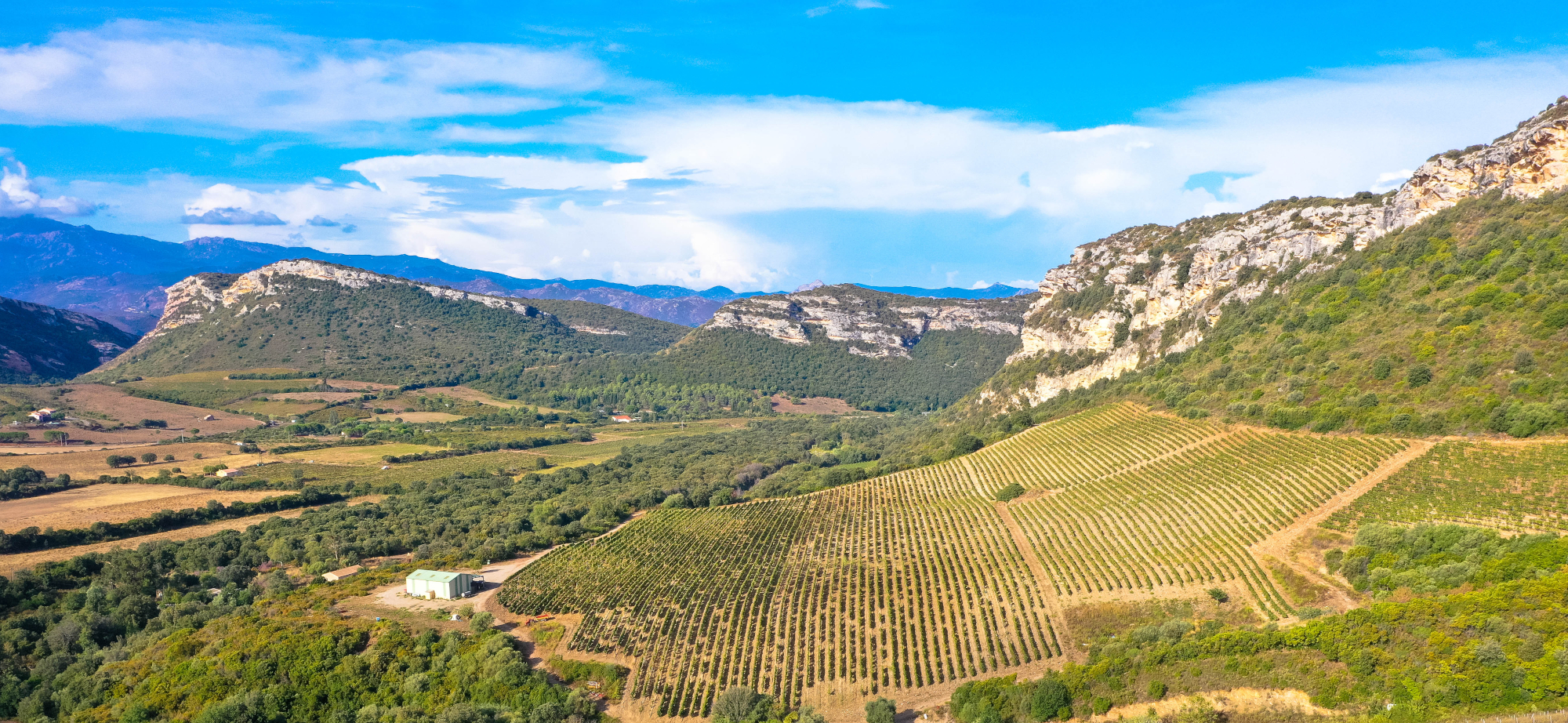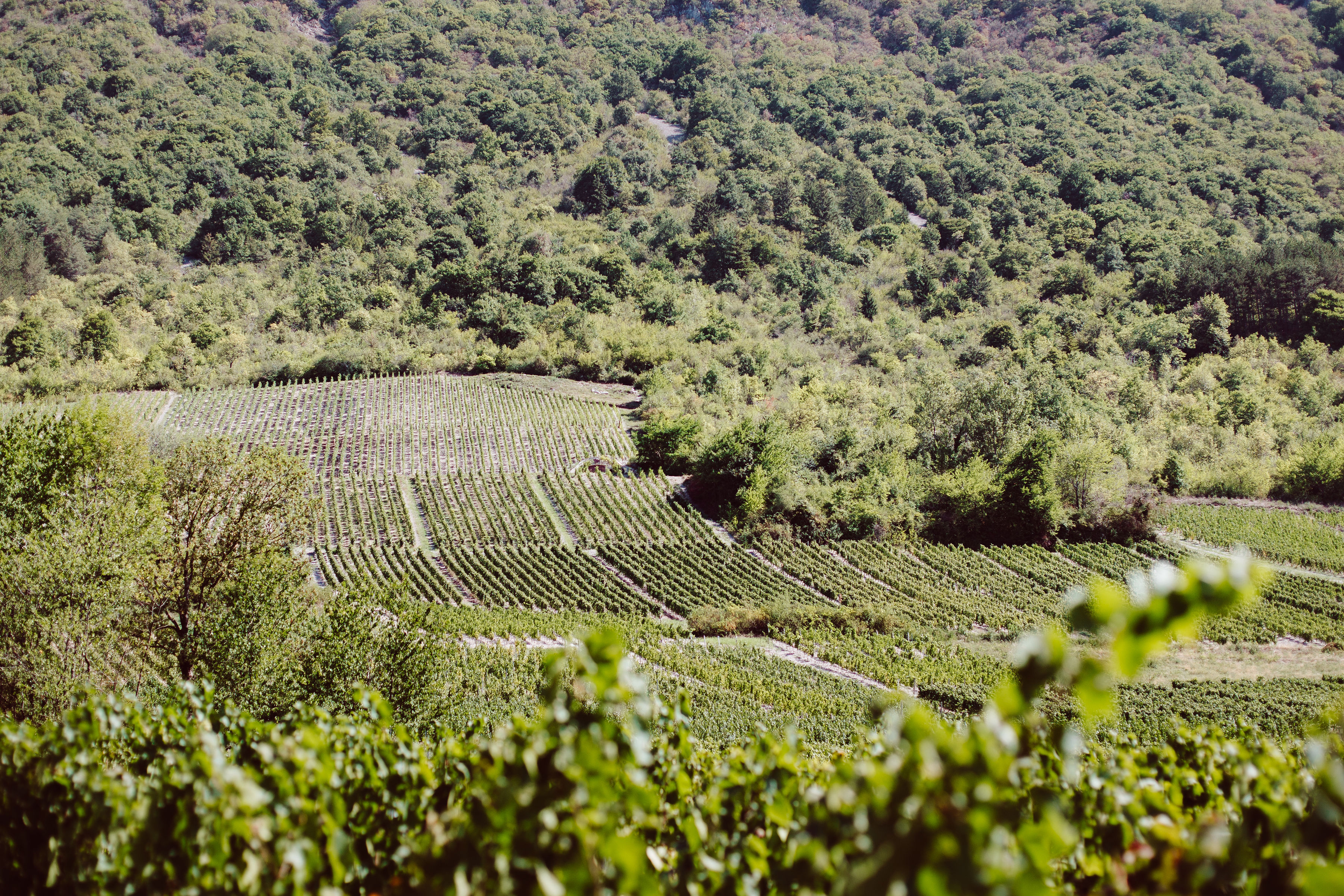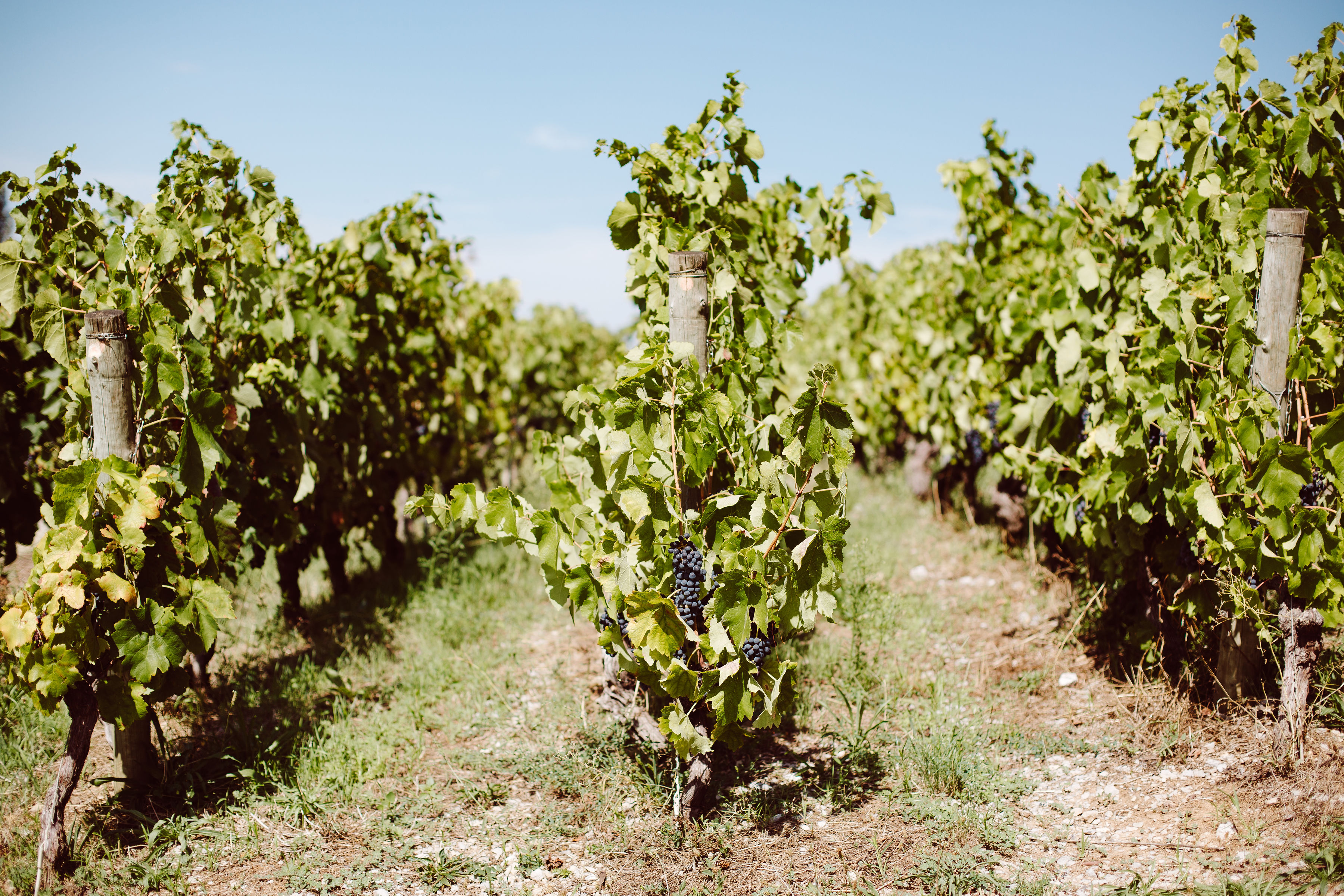
Corsica
Corsica's vineyards, proud of their grape varieties
Turquoise waters, steep cliffs, typical villages, preserved fauna and flora... and a vineyard of which Corsica can be proud. In full revival since the 90s, the vineyard of Corsica takes advantage of all the natural wealth of the island. It counts approximately 5,700 hectares, which are spread out along the entire coastline, between the Mediterranean Sea and the mountains. Although rosé wines dominate Corsican wine production, the many indigenous and imported grape varieties are the source of great red and white wines.
General presentation
The Corsican vineyard counts 9 appellations, spread along the coasts and on the two departments of Haute-Corse and Corse-du-Sud. From Bastia in the north to Bonifacio in the south, from Ajaccio in the west to Aléria in the east, passing through Calvi, Propriano, Sartène, Figari, Porto-Vecchio and Corte, there are many terroirs with distinct identities that give rise to a variety of wines.
The typical grape varieties of the region are :
- Nielluccio (or niellucciu): it makes the fame of the red wines of Patrimonio, in the north. It is found in almost all the other Corsican appellations; it represents more than 30% of the vineyard.
- Sciaccarello (or sciaccarellu): this is a grape variety found only on the island of Beauty and whose name means "crisp". It is cultivated mainly in the south-west of Corsica, around Ajaccio and Sartène.
- Vermentino (or vermentinu): also called malvoisie de Corse, it is the source of high quality dry white wines.
Many other grape varieties are used in the blending of Corsican wines: white and black carcajolo, bianco gentile, aleatico, paga debiti, barbarossa, ugni blanc, rossola... Carignan, cinsault, grenache, mourvèdre and syrah are also regularly invited in the red wines of Corsica
The appellations
Corsica has 9 appellations, which occupy some 3,000 hectares: one regional AOC, two crus, six Villages appellations and one vin doux naturel (VDN). More than half of the wine production is devoted to rosés; however, reds represent about 30% of the production, followed by whites and, in a small proportion, by muscats.
Regional Appellation Vin de Corse
These are the most widespread Corsican wines. Their production is limited to the east coast of the island, from Bastia to Solenzara via Aléria. The AOC Corsica is also present north of Corte, in the interior valley of the Golo. Wines of the three colours make up the offer, with a large preponderance left to the rosés, particularly famous.
The crus
Two emblematic appellations of Corsica are crus produced in the north and south of the island:
- AOC Patrimonio: this is undoubtedly the best known AOC of the Corsican vineyards. It originates from the north of the island and has its roots at the foot of Cap Corse, south-west of Bastia. The vermentino allows the production of dry, fruity and floral white wines, while the nielluccio, cultivated here in abundance, gives rich and ample red wines. The rosés are among the best in the region.
- AOC Ajaccio : in the south-west of the island, this appellation area extends all around Ajaccio, from the Gulf of Porto to Sartène. It is the region of sciaccarello par excellence. The whites are essentially made from vermentino.
The Village appellations
The AOC Corsica counts various geographical denominations, all endowed with a well marked identity:
- AOC Corse Calvi: it is one of the oldest soils of Corsica. In the north-west of the island, in the Balagne region, famous rosé wines are produced, as well as aromatic white wines and robust red wines, all with a strong personality. Vermentino dominates on the white side, and on the red side, blends of sciaccarello, niellucio and grenache are usually found.
- AOC Corse Coteaux du Cap-Corse : on the long and narrow peninsula which prolongs the region of Bastia are produced dry white wines stemming from the vermentino grape and reds of guard stemming from the traditional Corsican grape varieties.
- AOC Corse Figari: this is a very small terroir located in the southernmost part of Southern Corsica. It is also the oldest vineyard on the island. The harshness of the climate and the local grape varieties give birth to floral white wines, lively rosé wines and structured red wines.
- AOC Corse Porto-Vecchio : in the south-east of the island, this appellation area stretches from Bonifacio to Solenzara via Porto-Vecchio. Nielluccio and Sciaccarello grapes are grown on this arid land and are traditionally blended with Grenache to make elegant red and aromatic rosé wines. The whites are dry and fruity and come mainly from vermentino.
- AOC Corse Sartène: this appellation is located in the south-west of the island, around Sartène and Propriano. Wines are produced in all three colours.
Appellation VDN Muscat du Cap-Corse
It is considered as one of the best muscatels in the world. Muscat du Cap-Corse AOC is produced exclusively with the grape variety muscat à petits grains. This sweet natural wine is produced in Haute-Corse, in 17 communes.
The country wines/IGP
Finally, the IGP Ile de Beauté includes rosé wines, as well as red and white wines. They are produced in both departments and represent a large part of Corsican wines. The historical grape varieties of the region are mainly used to produce these wines which are progressively gaining in quality. They are complemented by continental varieties such as chardonay, merlot, pinot noir, grenache and syrah, to name but a few.
Appellations
Le vignoble

